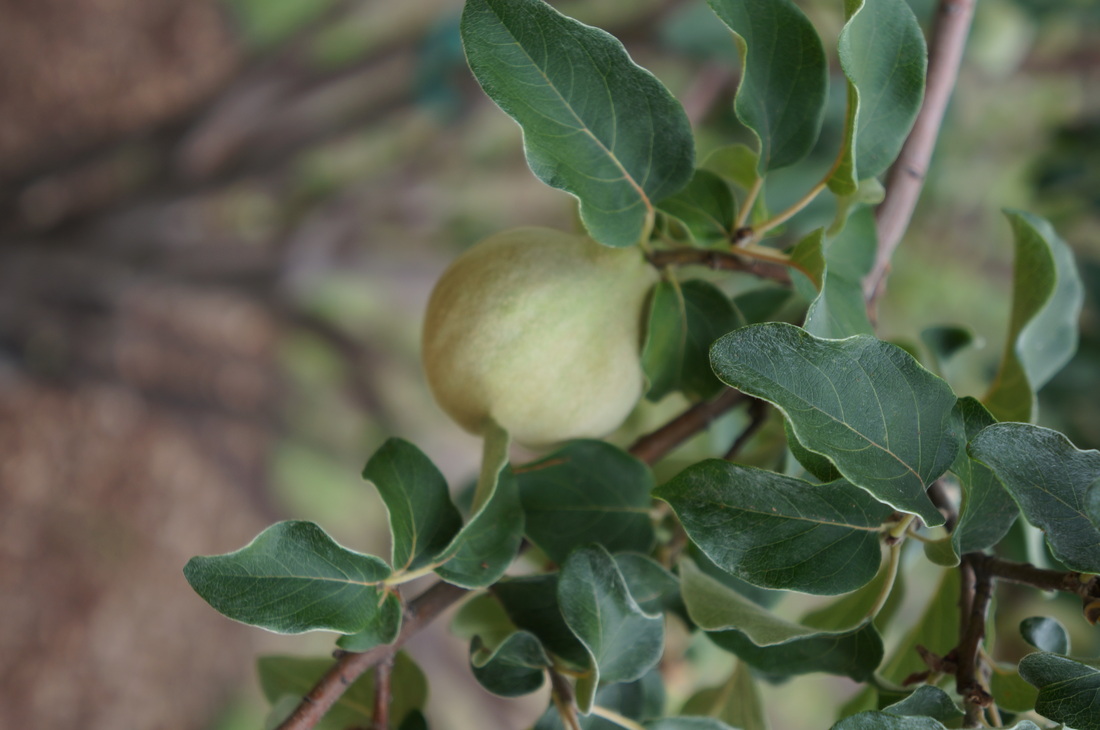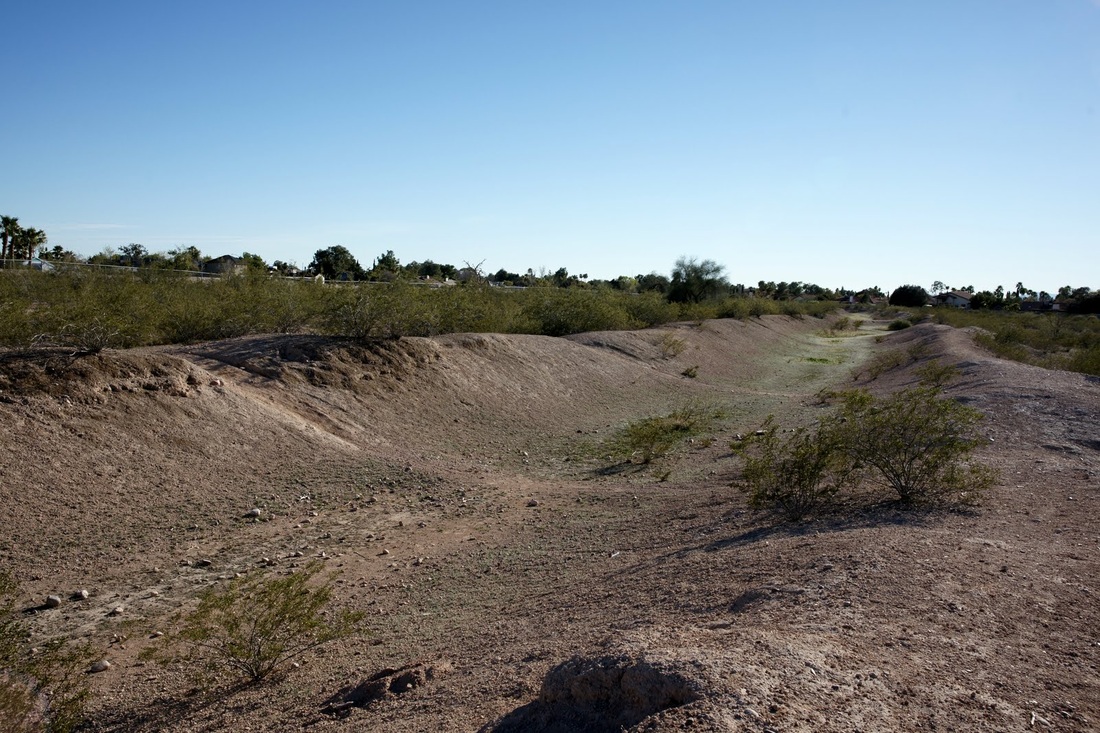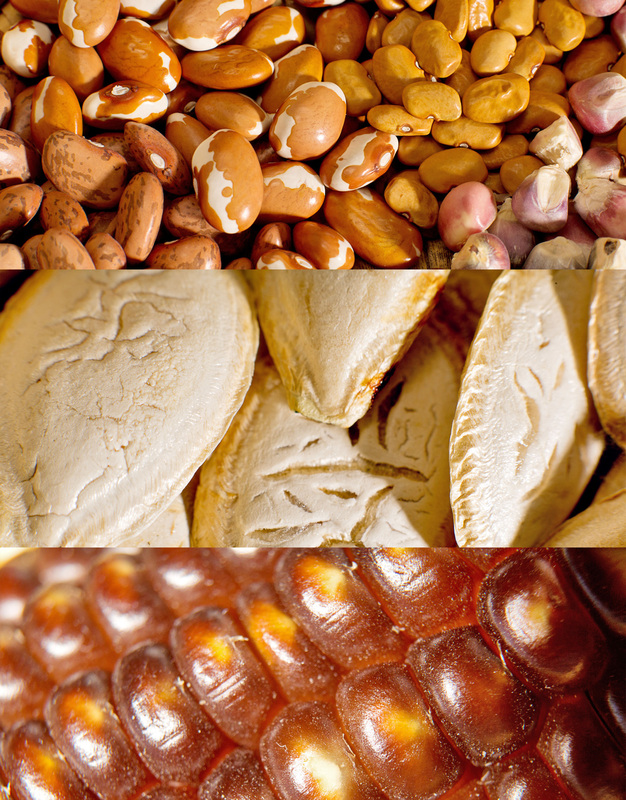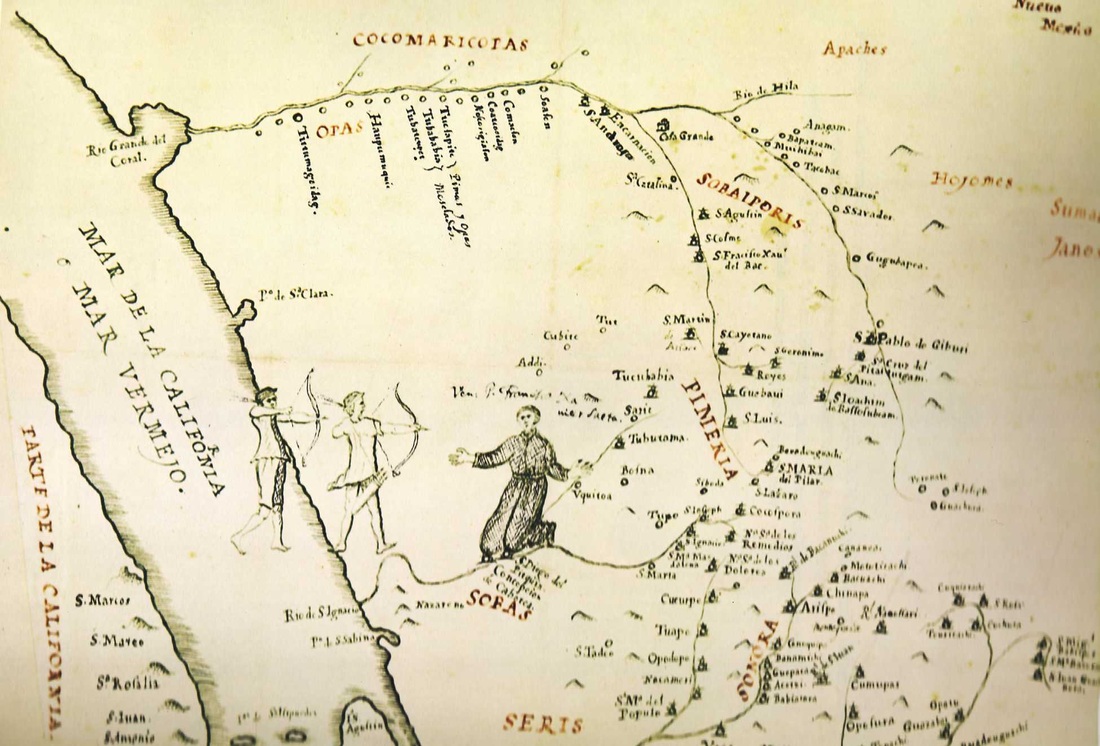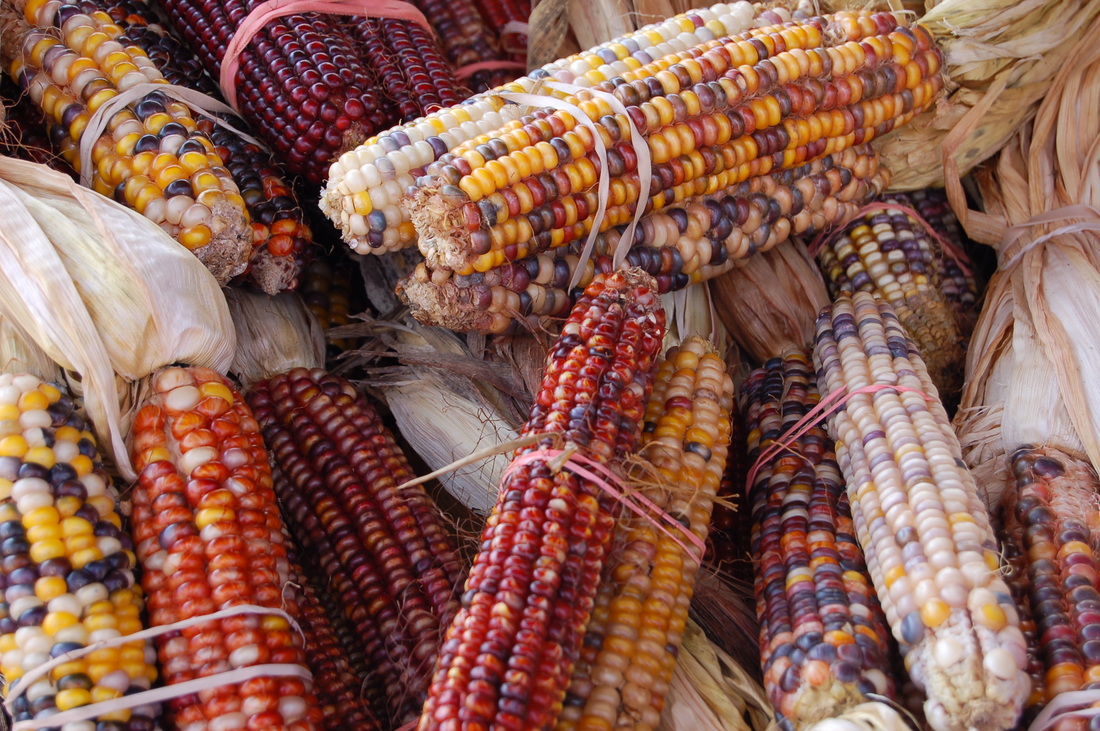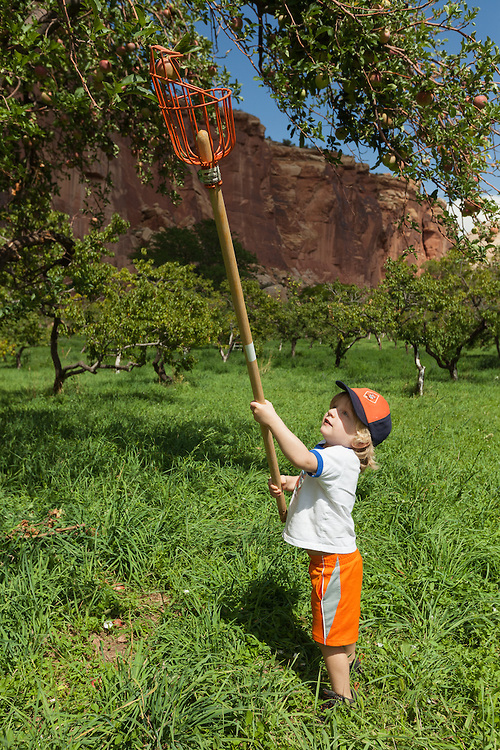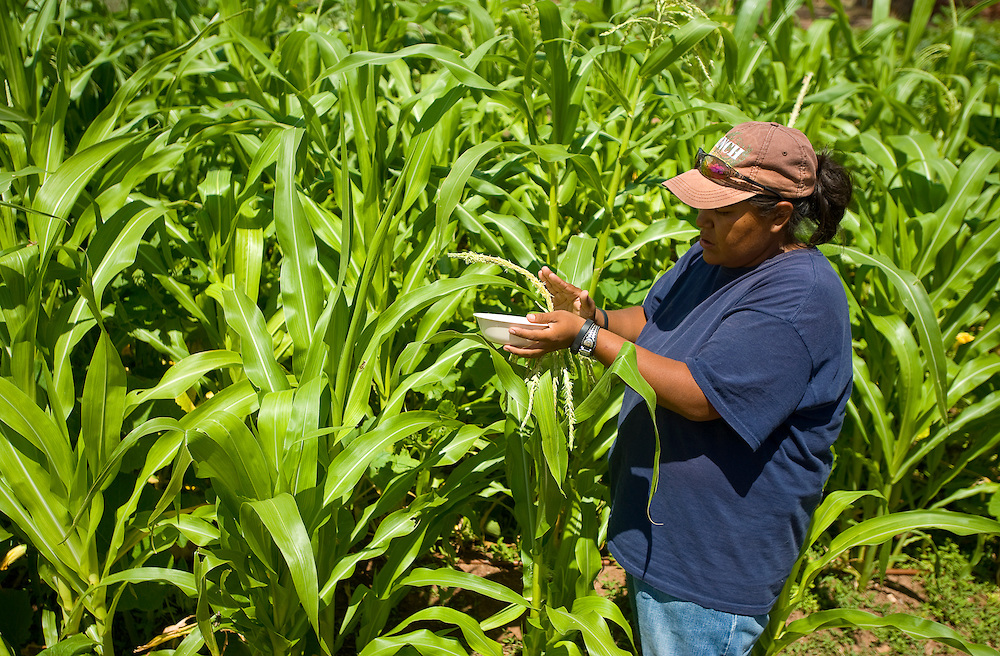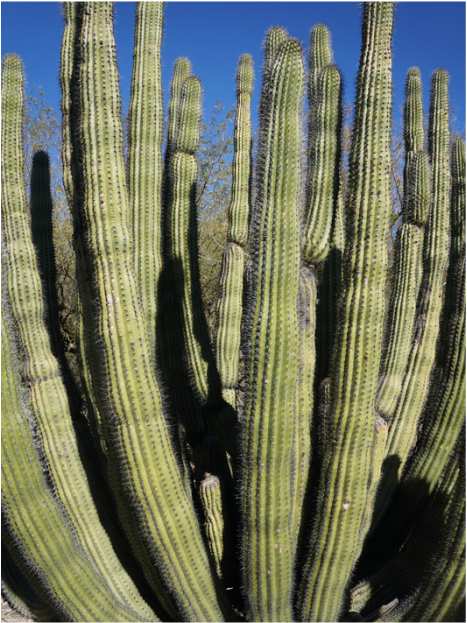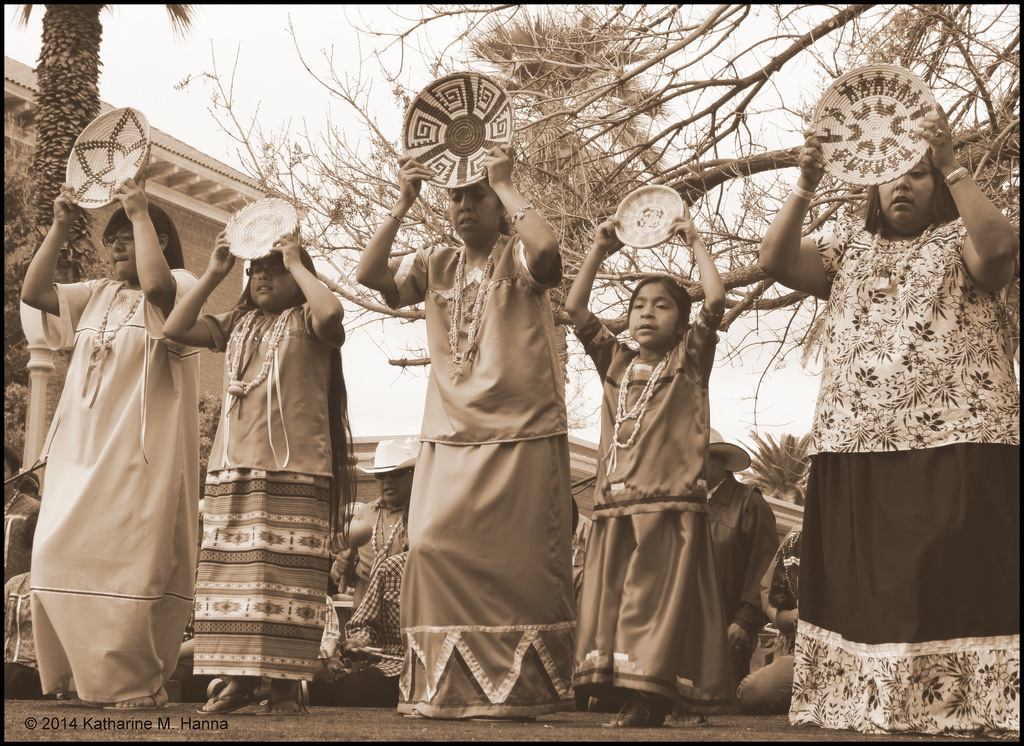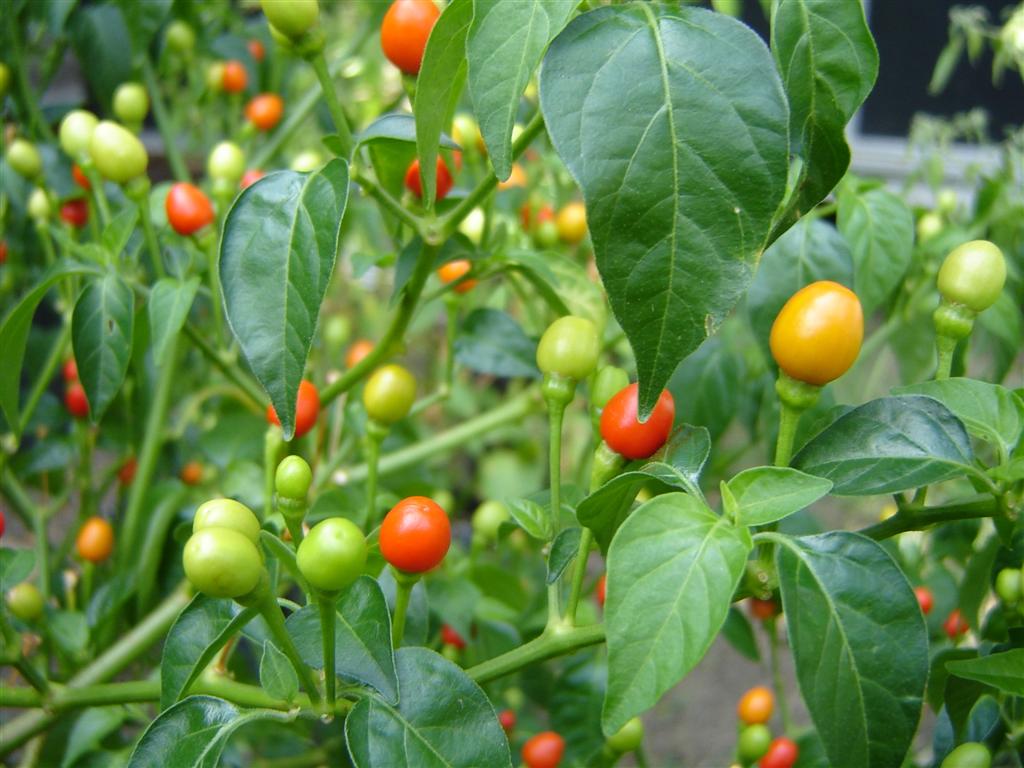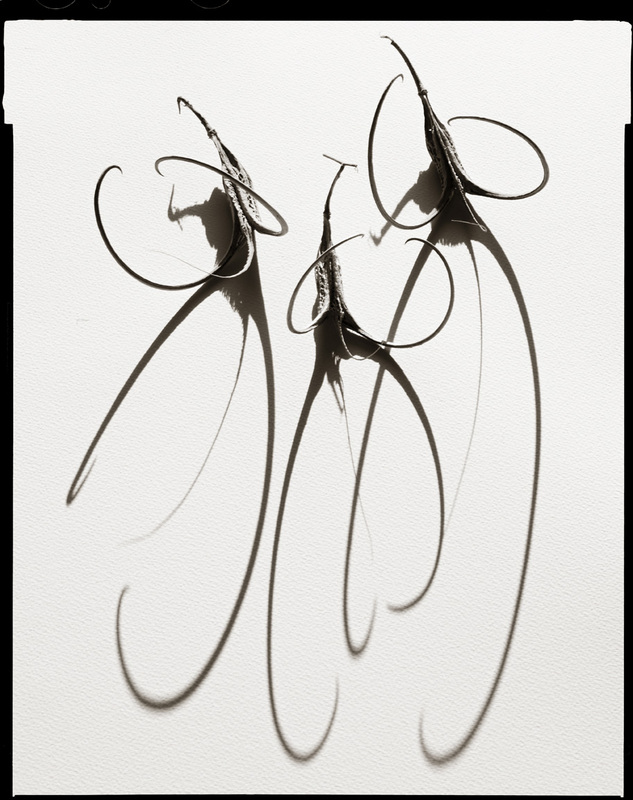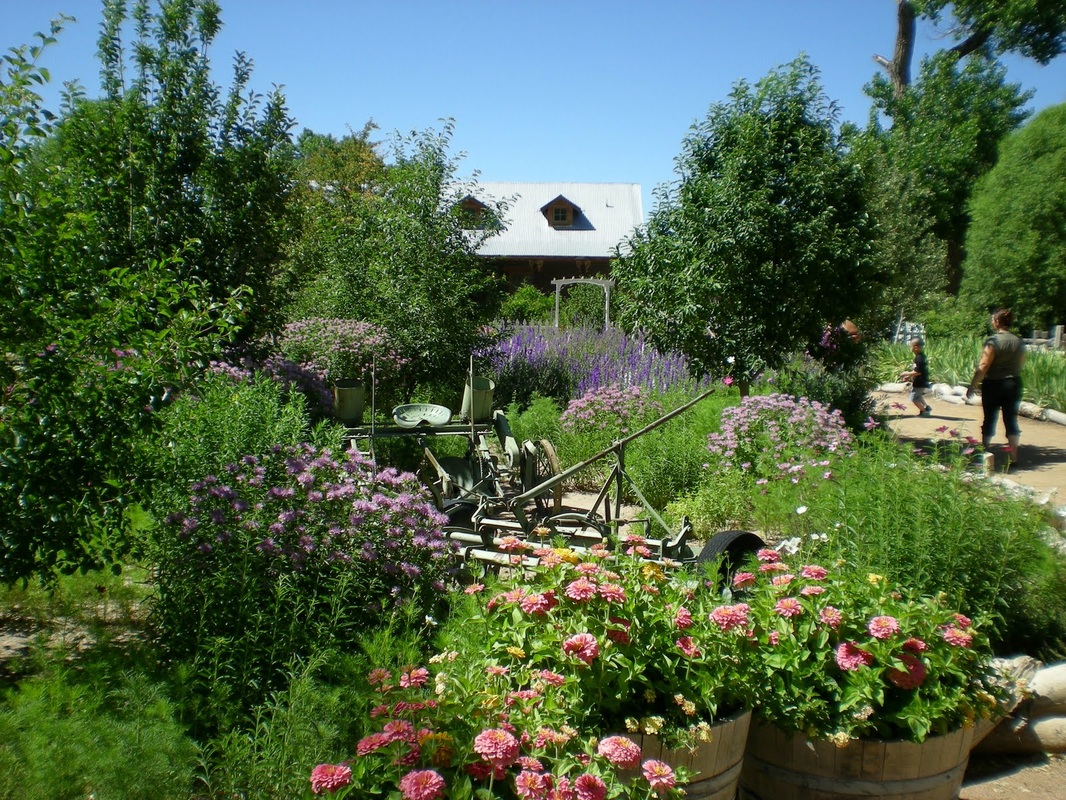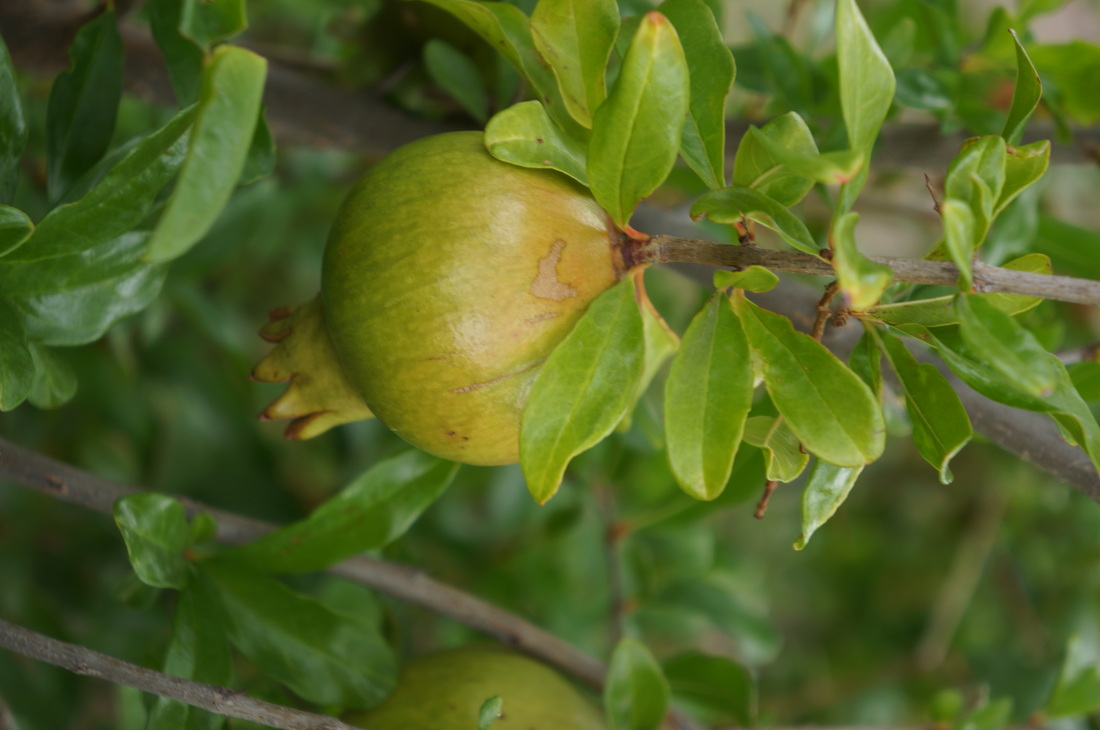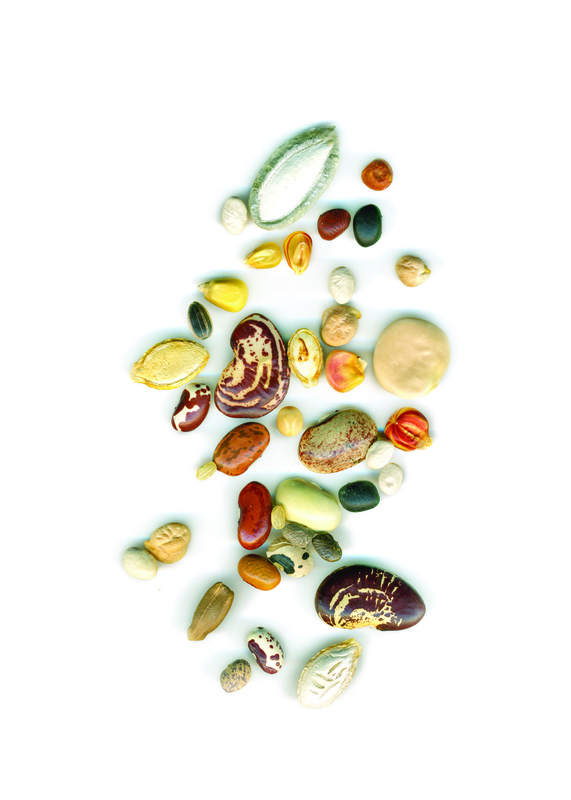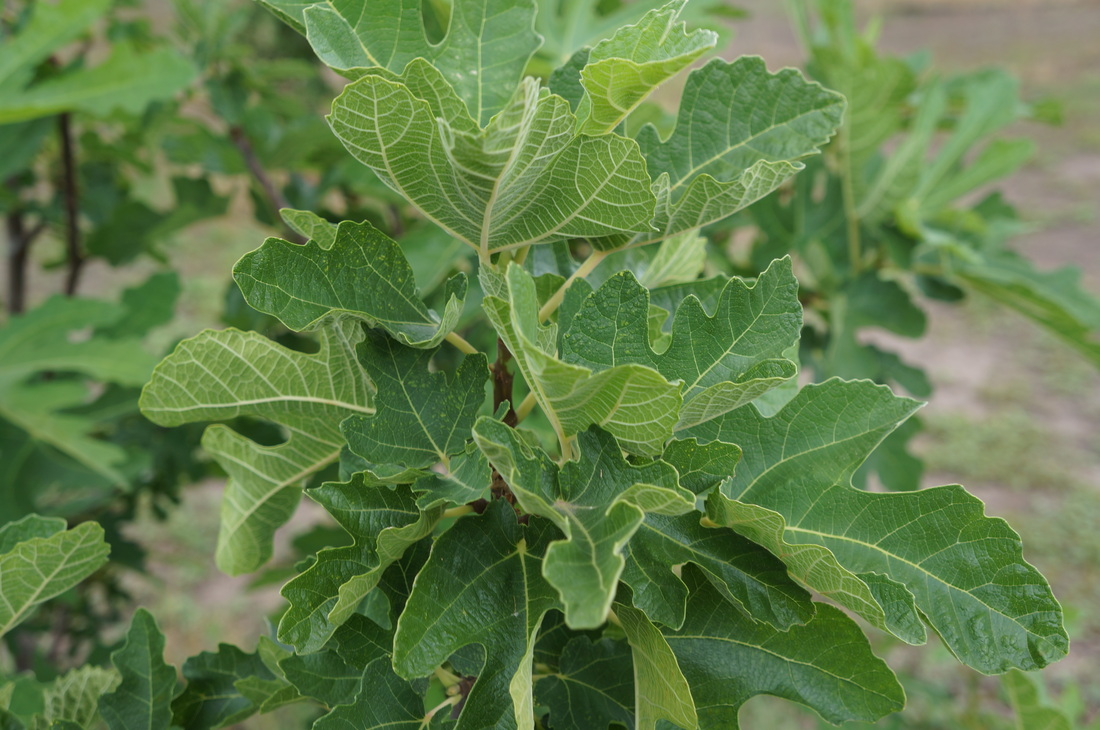LITERATURE REVIEW | HERITAGE GARDENS
INTRODUCTION
The agricultural legacy of the desert Southwest is unique. Agriculture has been practiced in the Southwest for thousands of years before the arrival of Europeans, adapted to local environmental conditions. What is also remarkable is that the system in the Southwest produces more food on less water than anywhere else in the world (Nabhan 2010). Development of agriculture is intrinsically linked with the development of permanent human settlements; without each other, neither could exist. In a day and age where most of the food that we consume every day is produced in another state or another country, with a completely different environment and water supply, it is easy to lose track of the cultural lifeways that made life in the desert possible for thousands of years. Though it has not often been the concern of heritage professionals to incorporate agricultural heritage practices into the greater interpretive and preservation whole, it has become more common to incorporate agriculture into the greater story of our culturally and historically significant places. A story of our past is made more whole with the story of the food which sustained it.
|
PREHISTORIC FOODWAYS
The ancient Hohokam, precursors to the modern O’odham tribes, were the farmers of the desert, and adapted their agricultural practices and resources to fit their unique needs. Much of this early agricultural innovation originated in Mexico, which had potential for crop development that was rivaled only by the Fertile Crescent and Asia (Dunmire 2004). The earliest origins of agriculture in the New World are found in present-day Mexico (Nabhan 2010). What is now southern Arizona benefited from its close proximity to this early agricultural center, as crops were brought north along trade routes from Mexico, where they could be tested in and adapted for the desert climate. Some of the crops that were grown in the early Santa Cruz River Valley were several varieties of squash, gourds, beans, and maize; those were further reinforced with crops that had been brought up from Mesoamerica, such as grain amaranth, tomatoes, cotton, tobacco, and prickly pears. From 2100 BCE to 1540 CE, 20 cultures native to the Southwest had independently developed a group of crops and agricultural practices that were unique to the Southwest (Nabhan 2010). Pottery, dating to around 2000 BCE, was found near Tucson, making these the oldest pots ever recorded in the Southwest. These pots allowed for the cooking and processing of food stuffs that would otherwise be too problematic to consume. Also found were pipes and remnants of a plant in the tobacco genus, dating to 1200 BCE, which mark this site the first known incidence of tobacco smoking anywhere in the world (Dunmire 2004).
The development of irrigation was a key component in developing agricultural practices in the desert. Current archaeological findings place the earliest date of irrigation of the Santa Cruz River around 1200 BCE. This system of canals and dams was developed independently of irrigation systems developing in Mexico around the same time (Dunmire 2004). The dams and canals that were dug by the Hohokam were incredibly sophisticated, and this irrigation system can be found nowhere else in what is now the United States (Dunmire 2004). The Hohokam used this irrigation system to cultivate corn, beans, squash, and gourds, as well as cotton, tobacco, little barley, native agaves, and cholla in their fields (Dunmire 2004). In addition to these cultivated agricultural yields, they also supplemented their diets with harvested wild foods of the desert, including mesquite pods, saguaro fruits, purslane, saltbush, and chollas, in addition to wild game, such as bison, pronghorn antelope, and rabbits (Dunmire 2004). The Hohokam disappeared from southern Arizona approximately 1,000 years ago. While no one knows with any certainty, it is suspected that severe drought may have played a role. While the Hohokam may have disappeared, it is their descendants, the O’odham, who inhabited this area of the Santa Cruz River when the Spanish first arrived on the shores of the New World. |
THE PIMERIA ALTA
When the Spanish arrived in the Pimería Álta, they found themselves in a unique and vibrant agricultural tradition. At the time of the Spanish arrival, native farmers in the Southwest were growing crops in a wider range of microclimates and life zones than the rest of the farmers of North America combined (Nabhan 2010), making these farmers experts in the unique growing conditions of the desert Southwest. The indigenous peoples also had at their disposal the “richest assemblage of food plants in the western hemisphere” (Dunmire 2004:33). To this day, no lasting domesticated and productive plants came from the area that is now the United States and Canada (Dunmire 2004). The O’odham people had domesticated some native southwestern crops for their own use; these include agaves, wolfberry, devil’s claw, bushmint, and chiltepins (Nabhan 2010). They also had their own manner of preparing food, such as boiling, grilling on coals, or parching in baskets.
The Spanish came with the intention of spreading the word of God to the New World, as well as exploiting it for whatever resources might be contained within its shores. They also sought to bring their food traditions with them, faced with an uncertain agricultural future before them. The conquistadores that came in search of gold were not as concerned with bringing those food traditions with them, but the missionaries who followed were. Father Eusebio Kino, who had studied agriculture and animal husbandry, was especially focused on breathing new life into the New World soils. In addition to a wide variety of fruit trees, vegetables, and grains, he also brought honeybees, livestock, and horses to the New World, which forever changed the face of the American Southwest. The plants and animals that Spain brought to the New World were not all species native to the motherland. Though the American Southwest and Mexico are largely associated with a Spanish cultural influence, the gardens and foodways of Spain were shaped themselves by Persian, Arabic, Moorish, Greco-Roman, Mayan, and Aztec cultures and foods (Nabhan 2010), which were all adapted for a dry, desert climate. Later settlers brought even more species with them, introducing dates, olives, berries, and several new breeds of livestock (Nabhan 2010). In 1767, the Jesuit missionaries were expelled from the New World by the King of Spain (Dunmire 2004), but their agricultural and livestock heritage remained and became completely ingrained in the social fabric of the American Southwest. |
HERITAGE FARMING TODAY
Heritage farming practices are more relevant today than ever. Especially in the desert Southwest, where predictions state that the environment will only get hotter and drier in the very near future, maintaining agricultural systems and propagating plants adapted to the desert environment may soon become a necessary means of survival. What the farming practices in the Southwest have been accomplishing for years, in terms of breeding edible and productive crops that can withstand sun and drought, may be an advantage to the rest of the world. The world is predicted to soon have less available fresh, potable water; therefore, furthering the development of agricultural practices that are water-wisewill help to ultimately adapt our agricultural lifestyles to changing times. For example, the O’odham brown tepary bean that can reach maturity and produce seeds with only soil moisture accumulated from two rain events (Nabhan 2010),.
The increased interest in local food production has proved advantageous for heritage farming practices, as people are seeking out these locally produced heritage products (Nabhan 2010). Heritage farming is on the upswing throughout the country, especially in the Southwest, combining traditional desert farming techniques with modern machinery. This resurgence of interest in heritage farming is especially advantageous given the precarious water situation in the Southwest. Due to unprecedented post-war growth in the sunbelt areas, water and land that was once used primarily for agriculture is now being destroyed by development, whereas the water becomes redirected for residential, recreational, and industrial needs (Nabhan 2010). People’s interest in supporting heritage farming practices can be seen throughout the Southwest, and indeed, all over the nation, at farmer’s markets, local farm-to-table restaurants, organizations like the Santa Cruz Valley Heritage Alliance, and publications such as Edible Baja, who promote heritage and local sustainable food production. The increasing interest in heritage foods has also made other groups sit up and take notice. Cultural and historic sites can encourage visitor growth by featuring heritage foods at the visitors’ center, or during special events, allowing visitors a chance to actually taste history (Nabhan 2010). Casual visitors are given the opportunity to explore heritage foods, and visitors that come with the express intent of exploring agricultural traditions comprise a new category of visitor. Congress has asked the National Park Service to explore and develop ways to encourage the production of traditional products in national parks through its Conservation Study Institute Publication #14 in 2007 (Nps.gov 2014). This effort can be seen in several historic areas managed by the National Park Service: The Kino Heritage Fruit Tree Project at Tumacacori; the gardens at the Hubbell Trading Post National Historic Site; the gardens at the Canyon de Chelly National Monument, where the agricultural heritage is interpreted by Navajo Park Service staffers; and the historic orchard at Capitol Reef National Park, among others. Although these heritage farms on state and national park land are designed for interpretation and education of visitors on native and heritage food traditions, they serve a dual purpose. By growing, preserving, and propagating these heritage species, they also serve to ensure their continuous survival for the future. Many of these sites and others endeavor to breed and propagate these species to keep one foot in the traditions of the past while also looking toward the future. When many parks, farms, groups, and individuals share the load, it increases the chances of survival and adaptation of these heritage foods and livestock. |
ETHNOBOTANIC GARDENS
Ethnobotanic gardens are a small piece of whole heritage foodway preservation oeuvre. Often ethnobotanic gardens take the form of a small exhibit incorporated into a larger botanical garden, however, ethnobotanic gardens themselves have grown increasingly common as demonstration areas in other cultural and historic sites. Sometimes these gardens are attempted recreations of historic gardens. However, as landscapes are composed of living, changing things, its often not possible to have and preserve the exact planted monument as it was at the time; rather, “the historic functions, the diverse traditional craft techniques, and the original ideas” (Hajós 2004:258) are the important elements that can be interpreted and tell us something about our botanic past. Ethnobotanic gardens can also exhibit collections of useful species, exposing a relationship between people and plants (Innerhofer and Bernhardt 2011). Though they can be considered a type of reconstruction, gardens that a visitor can use all of their senses to explore give people an opportunity to put themselves into the historic place; “An essential aspect of monument preservation is to bring about the vivid recollection of the abundance of past human culture” (Hajós 2004:258). The experience of food can recall an immediate memory for people as individuals, remembering our grandmother’s pie, or special birthday treats. Food itself, and the preparation of and cultivation of food, is a universal human attribute. When we can put ourselves into the shoes of a different person at a different time, through the way that they grow, cook, consume, and store food, we can easily view them as real, living, breathing people, and not some grand historic abstract. If the purpose of preservation is to allow the visitor to project themselves into the past, a heritage garden presents the past in a way that is very tangible, and accessible, and also quite visceral.
|
PURPOSE OF ETHNOBOTANIC GARDENS
Ethnobotanic gardens do not have to be designed with the sole intention of representing the food that people grew and ate. Plants were grown for other purposes, including medicine, crafts, and ritual purposes; in this way, ethnobotanic gardens can illustrate the fundamental relationship between people, plants, and the natural environment (Innerhofer and Bernhardt 2011). A planting plan can be determined in conjunction with existing indigenous groups, if at all possible, or gleaned from archaeological evidence or other research outcomes. Ethnobotanic gardens can also provoke an instinctual reaction to the natural world, an irrational response in a rational time, engaging people’s hearts instead of just minds (Cohen 1997). Establishing a metaphysical link between the past and the present allows people to connect sympathetically with a people and place not of their current time.
Ethnobotanic gardens can serve another important purpose, in preserving the biological diversity of plant and animal species (Innerhofer and Bernhardt 2011). Though we tend to think of gardens and plants as fairly static and relatively unchanging, they can be utilized for interpretive efforts. The garden can be used as a backdrop or resource for teaching classes and workshops on traditional medicinal techniques, or be used to grow materials for classes and demonstration of traditional crafts (Innerhofer and Bernhardt 2011). Preserving the physical plant is important for preserving the genetic reserve of the species, as well as the cultural heritage that is an implicit part of its cultivation (Jones and Hoversten 2004). Ethnobotanic gardens can also serve as an important cultural linkage throughout generations. By researching and implementing carefully constructed ethnobotanic gardens, they can be maintained and cultivated through a number of years, which helps to convey shared cultural knowledge and understanding through the generations (Innerhofer and Bernhardt 2011). This is especially critical when considering that many of these species could face threats in the wild through climate change, habitat loss, or other possible destruction. |
WHAT MAKES AN ETHNOBOTANIC GARDEN SUCCESSFUL?
Though it is difficult to immediately define what constitutes success in any built environment, especially in the landscape, an attempt at quantifying those attributes also means attempting to continually improve upon them. Susan Jones and Mark Hoversten endeavored to visit and study a large number of ethnobotanic gardens located throughout the southwestern United States, and distilled their findings into the following definition: “A successful ethnobotanic garden tells a compelling story about the relationship between people, plants, and the natural world in a particular place at a particular time, within a broader cultural or environmental context” (Jones and Hoversten 2004:153). They also propose six questions for anyone attempting to design an ethnobotanic landscape to ask themselves before proceeding. These are: What people are being interpreted? What aspects of their culture? How did they use this place? What plants did they use? How did they use them? And what did they make with them? Through their careful study and analysis, Jones and Hoversten determined that the best ethnobotanic garden design goes beyond merely disseminating information, and strives to provoke thought, bring about change in visitors’ perception of, attitudes towards, and behavior on the land (Jones and Hoversten 2004:153). In addition to their visits to a number of ethnobotanic gardens, they did extensive research and investigation of other case studies, to develop a framework for attributes of successful ethnobotanic gardens. In their opinion, a successful ethnobotanic garden: adheres to a clearly defined mission; focuses on its visitors and capitalizes on the resources of its site and institution; tells a compelling story; provides an environment conducive to learning; and adapts through time (2004). These attributes cover the range of design decisions that should be considered when developing an interpretive framework for ethnobotanic gardens. They hope that the consideration of these five attributes will lead to a successful interpretation, programming, and design framework (Jones and Hoversten 2004).
A successful design can link us to our collective past, and teach us tolerance and respect for others, as well as a responsibility towards the earth (Jones and Hoversten 2004). A good design can also engage all of a visitor’s senses, and connect them to nature on an emotional level (Cohen 1997), however briefly. The design can also incorporate experiential learning opportunities for people to visually connect to the heritage that is being represented in the garden design (Jones and Hoversten 2004). Visitors are a garden’s most important resource, and without them, all of the interpretation, design, and research will be moot. In this, ethnobotanic gardens are more effective when they are fully integrated into the fabric of a site (Jones and Hoversten 2004). Getting people to the site so they can project their own memories and experiences into it is considered key for success. |
THE VISITOR EXPERIENCE
If visitors are the most important component of an ethnobotanic garden, how can a garden be designed in a way that is informative and engaging for the visitors? Jones and Hoversten present several attributes of a successful visitor experience, known by the nickname ADROIT: a clearly defined Arrival; Decompression before the new experience; Reception to the message being imparted; Orientation to prepare the visitor for an education journey; Interpretation to provoke thought; and Transformation of the visitor or their behavior in some way (2004). Several non-material qualities that contribute to the overall visitor experience are also suggested: namely, congruency between spaces; immersion in the space; proximity to other cultural or environmental resources; and access to the site itself and its surrounding resources (Jones and Hoversten 2004).
|
HERITAGE FARMING EFFORTS IN THE SANTA CRUZ RIVER VALLEY
There are many organizations that work within the greater Santa Cruz River Valley, focused on discovering, recovering, and growing these heritage foods for the future. All of these groups could be considered for partnerships with the Tubac Presidio State Park in developing their own heritage garden project.
The Kino Heritage Fruit Tree Project is working in partnership with Arizona Sonora Desert Museum and Jesus Manuel Garcia-Yanez, as well as Robert M. Emmanuel at the University of Arizona to find and propagate fruit trees that are of the same cultivars brought by the Spanish missionaries in the 17th and 18th centuries, by looking at mission orchard communities, historic houses, and private backyards in Arizona and Sonora, Mexico. The Heritage Fruit Tree Project is cultivating these stocks and planting them in the historic orchards at Tumacacori National Monument and Tucson Origins Historic Park, contributing to the interpretation, education and preservation of these heritage fruit stocks (Desertmuseum.org). Native Seed/SEARCH, based in Tucson, was founded to protect the biodiversity of the plants of the southwest by storing and propagating seeds, distributing the seeds to tribal communities, and growing and adapting seeds at test gardens and in partnership with growers worldwide. Seed saving serves dual purposes; it preserves the cultural practices associated with the heritage crops, while protecting the biodiversity of the groups and promoting food security through the preserved genetic diversity. Promoting and propagating heritage crops allows communities to guarantee their own food security by saving and planting their seeds year after year, promoting the cultural sustainability and survival along with the seeds’ survival (nativeseeds.org). Tumacacori National Historic Park is working in partnership with the Kino Heritage Fruit Trees Project to replant a section of the historic mission orchard at the site. Research was undertaken to identify, obtain and propagate these historic trees, including peach, pear, apple, quince, pecan, pomegranate, and fig. Locating this heritage garden in a historically significant mission site enhances its connection with the cultural interpretation of the site, and is one more link in the chain that connects the whole network of heritage gardens in the Southwest (Nps.gov). The Santa Cruz Valley Heritage Alliance is a group working towards the establishment of the Santa Cruz River Valley as a National Heritage Area. A National Heritage Area is a designation of a cultural landscape that provides a framework for preservation efforts and economic growth within the designated area. The National Park Service defines a National Heritage Area as a place “where nature, cultural, historic and recreational resources combine to form cohesive, nationally distinctive landscapes arising from past and present human activities shaped by geography” (Nps.gov). The designation of National Historic Area does not impose federal zoning or regulations; instead, it is a community-based preservation strategy that simply encourages preservation and development (Santacruzheritage.org). According to Santa Cruz Heritage Alliance, “the non-economic benefits of the proposed Santa Cruz Valley National Heritage Area include the promotion of local foods, crafts, and other traditional products. The National Heritage Area designation also supports and improved quality of life for residents through preservation of the places, landscapes, and traditions that make this region unique” (Santacruzheritage.org). The incorporation of local and heritage foods and products into the program for the Tubac Presidio State Park can serve to establish the park as an integral piece of the National Heritage Area. |
